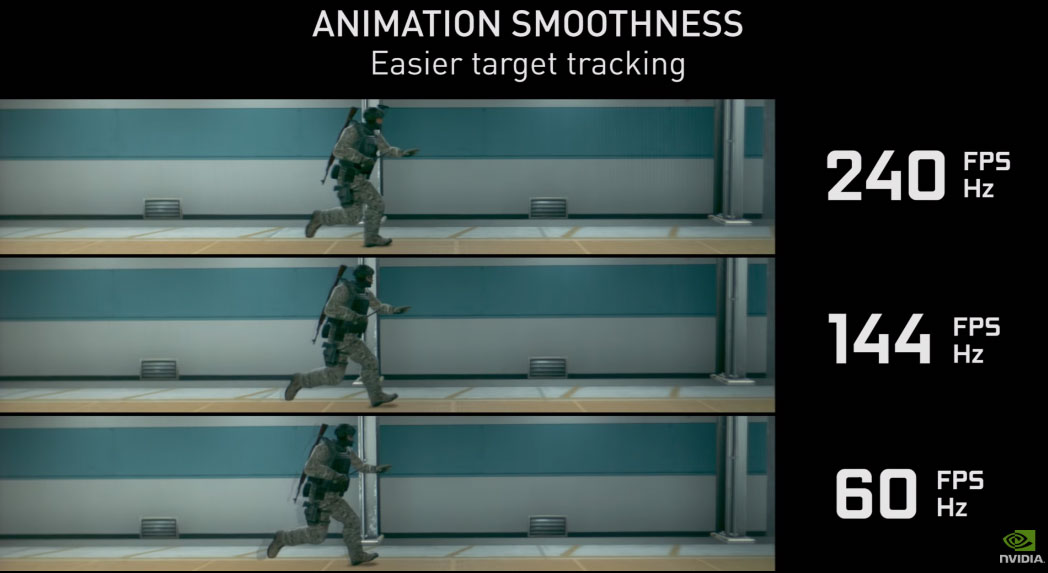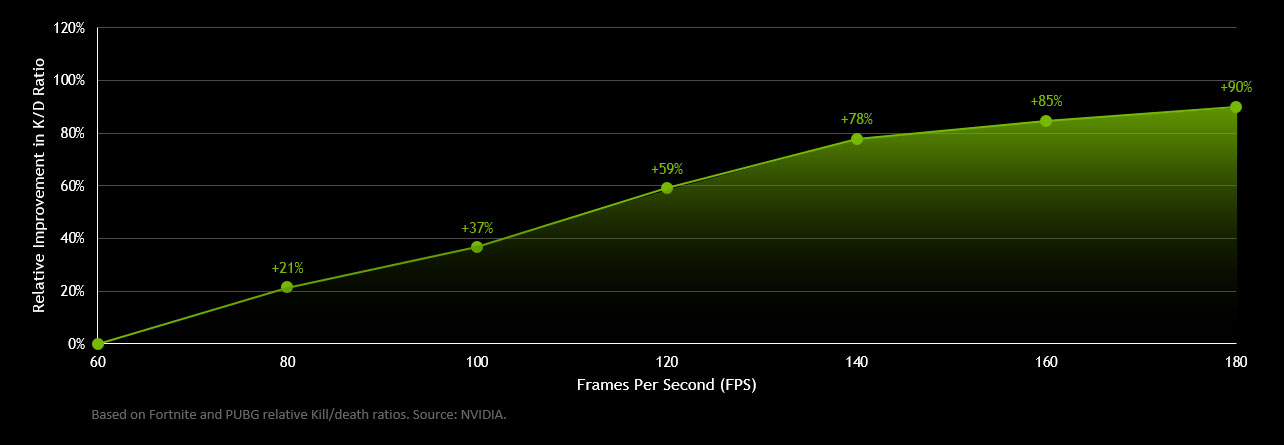Nvidia study finds gamers have better K/D ratios at higher framerates
Yes, playing at 240fps can be advantageous versus playing at 144fps, according to this study.

Few people would dispute that playing a game at 60fps yields a significant benefit over 30fps, but does the same hold true when hitting triple-digit framerates? And what about 240fps versus 144fps, does it truly matter? It does, according to Nvidia, particularly when using a high-end gaming monitor paired with a fast graphics card.
The GPU maker has been trying to drive this message home for several months now, and its latest study draws a correlation between higher framerates and better kill/death ratios. Have a look:

The above graph plots data from a study Nvidia conducted earlier this year. In it, we can see that the K/D ratio is 90 percent better when playing at 180fps versus 60fps.
"On its own, correlation doesn’t mean causation of course. But put in the context of fps benefits such as animation smoothness, reduced ghosting and tearing, and lower system latency outlined in the article, the positive relationship shown in the chart makes a bit of sense," Nvidia explains.
The article referenced goes into some detail about the differences between refresh rates (measured in Hz) and framerates (measured in fps), how ghosting is reduced at higher framerates, what effect higher framerates have on latency, and a few other things. It's an interesting read.
It's not surprising that an Nvidia study would find several benefits in playing games at much higher framerates—Nvidia obviously has a vested interest here, as it sells GPUs and makes money off of G-Sync displays. But that doesn't mean Nvidia is wrong.
Nvidia is not alone in this thinking.
Keep up to date with the most important stories and the best deals, as picked by the PC Gamer team.
"For many years, esports pros have tuned their hardware for ultra-high frame rates—144 or even 240fps—and they pair their hardware with high refresh rate monitors. In fact, ProSettings.net and BattleRoyaleSettings.com report that 99 percent of Battle Royale Pros (Fortnite, PUBG and Apex Legends) are using 144Hz monitors or above, and 30 percent are using 240Hz monitors," Nvidia stated in March.
Nvidia's claim is also echoed in testing conducted by Linus Tech Tips, from back in June. Have a look:
So there you have it, an excuse rooted in science to upgrade your graphics card and/or monitor. And maybe your CPU and motherboard as well.
Paul has been playing PC games and raking his knuckles on computer hardware since the Commodore 64. He does not have any tattoos, but thinks it would be cool to get one that reads LOAD"*",8,1. In his off time, he rides motorcycles and wrestles alligators (only one of those is true).





